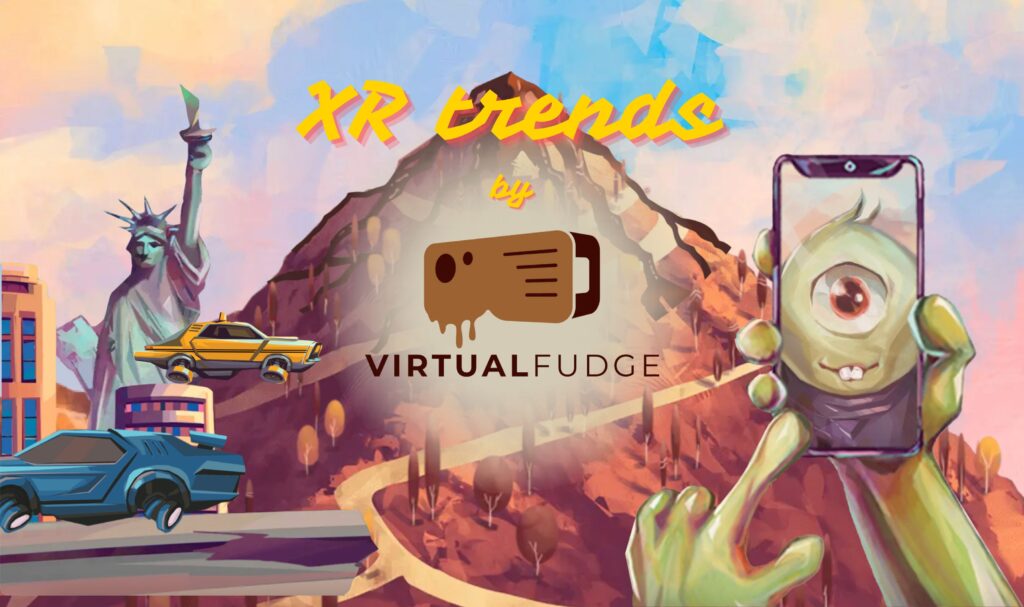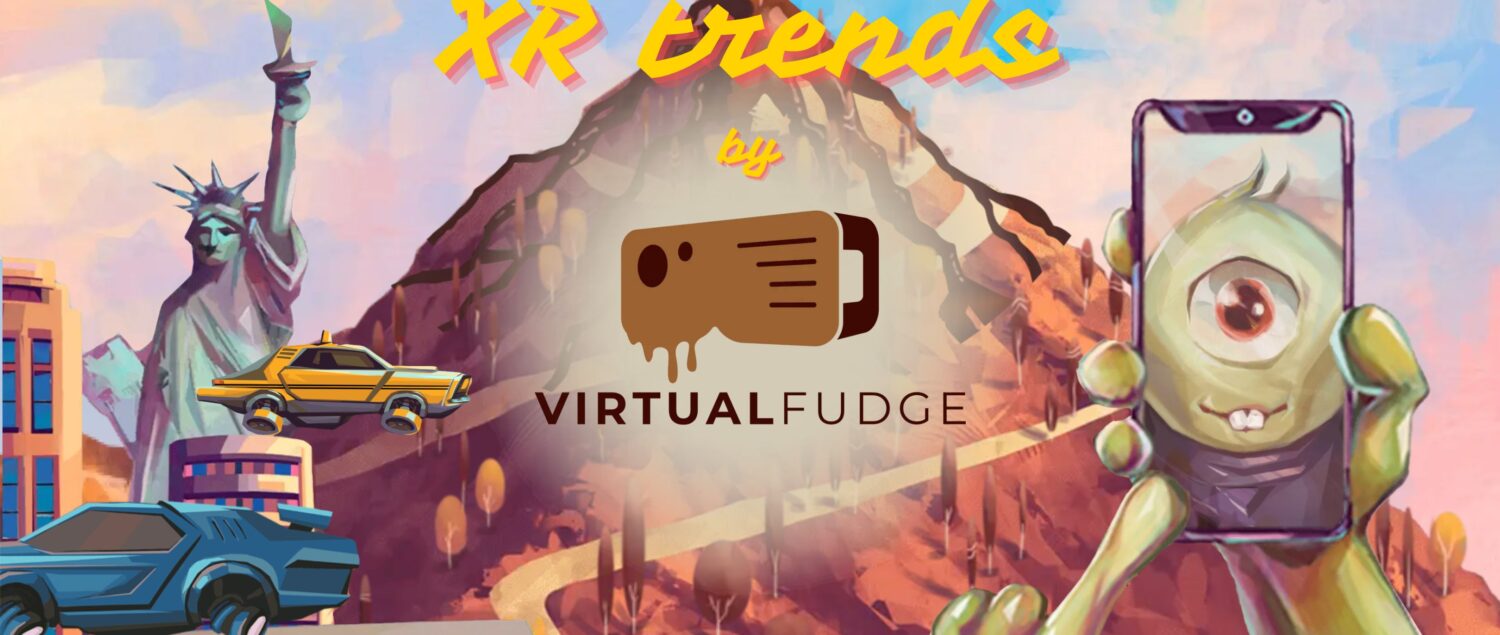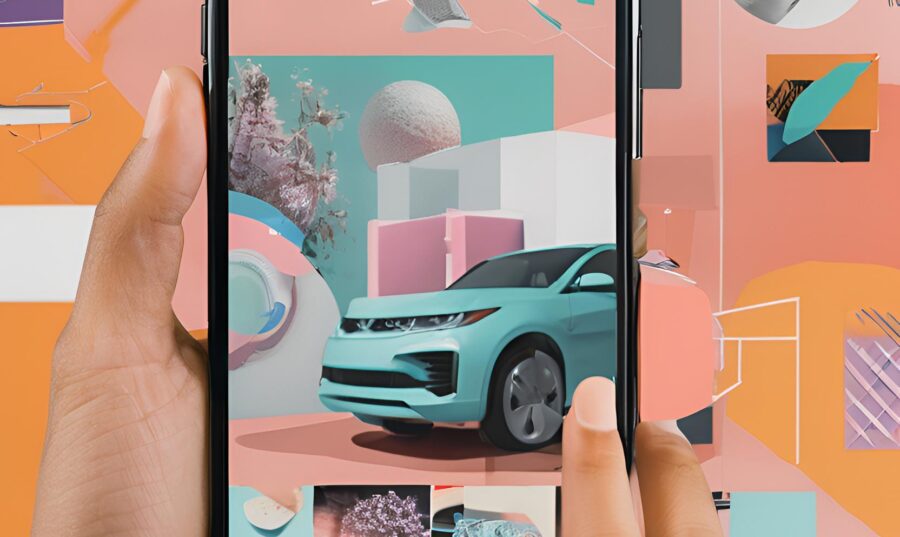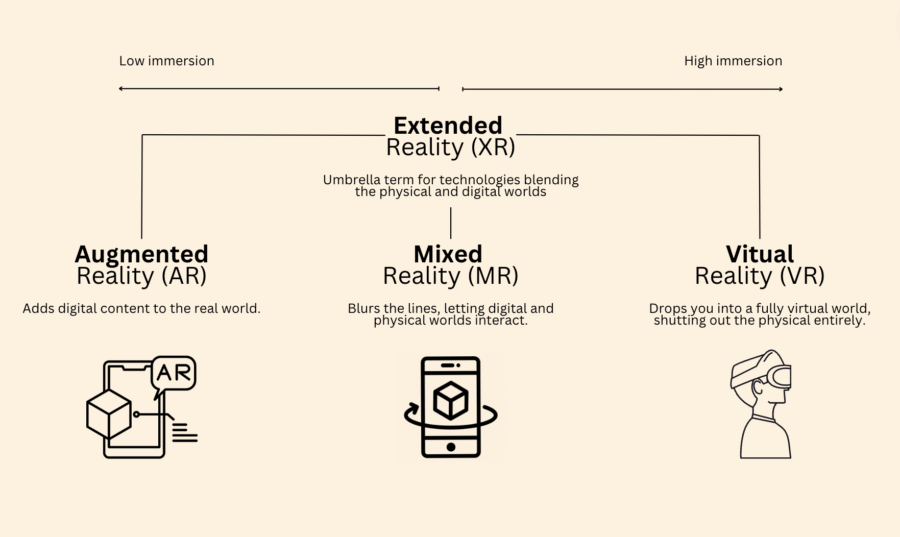Extended Reality (XR) is rapidly reshaping industries and our daily lives. The developments that are made are as trending as your favorite TikTok dance. So, what’s happening in the XR universe? Let’s explore some trends that are reshaping how we engage with the world (spoiler alert: it’s getting pretty fudge-ing cool).

1. The Rise of the Metaverse
Ever wondered how it would be like to be someone else, to live in their shoes or pause from your own life for a sec? Well, this is your change to zoom out and say bye to that annoying mother in law. The metaverse, a collective virtual shared space, is gaining traction and is changing the world as how we see it. It combines elements of the internet, social media, gaming, AR/VR and cryptocurrencies to create persistent, shared digital worlds. Meta is building a VR social platform, Roblox is facilitating user-generated video games, and some companies are offering up little more than broken game worlds that happen to have NFTs attached. We can even argue that Habbo Hotel and Fortnite are also examples of the Metaverse. Advocates from niche startups to tech giants have argued that there is a lack of coherence to what the “Metaverse” truly entails. It is still being built, and it’s too new to define what it means. Compare it to the development of the internet in the 1970s, nobody had an idea of what it would eventually look like, but build it as we go. economies.Tech companies like Microsoft, Meta Nvidia, Unity, Roblox and Snap—as well as a variety of smaller companies and startups—are building the infrastructure to create better virtual worlds that more closely mimic our physical life. Despite its challenges, the metaverse offers immense potential for social interaction, virtual workspaces, and new digital.
2. Hyper-Realistic Avatars
XR is pushing the boundaries of avatar creation. With advancements in AI and 3D modeling, avatars are becoming increasingly lifelike, enabling more natural and expressive interactions in virtual environments. Users also have more abilities to customize their avatars in such a detailed manner, users can truly make their virtual presence their own. This kind of personalization can lead to a more immersive and engaging virtual experience.
3. Integration of XR into Daily Life
XR is gradually seeping into our everyday routines. From shopping and gaming to education and healthcare, XR applications are becoming more accessible and user-friendly. Imagine an app that allows you to quickly scan products at the grocery store and easily choose clean, eco-friendly goods—this can now be possible with XR, simplifying your shopping experience. Or effortlessly shopping for Noyah products in their virtual store on the Noyah Augmented Reality app – bringing real world experiences from your phone.
4. Spatial Computing
Spatial computing, which blends the physical world with digital interactions, is at the forefront of XR innovation, transforming how we see and engage with our surroundings. This technology is seamlessly weaving digital data into the real world, creating a kind of “digital fabric” that enhances AR and MR applications in ways we’ve only dreamed about. With spatial computing, the boundaries between the virtual and physical are disappearing—talk about living in a world where reality literally bends to your touch!
This technology is also revolutionizing industries like healthcare, architecture, and education. The creation of this technology can lead to surgeons practicing complex procedures in 3D environments or students exploring ancient civilizations through immersive digital recreations—spatial computing turns these visions into reality. It’s not just about layering information but about creating deeply interactive, context-aware environments where digital objects have real-world presence.
5. Multi-Sensory Experiences
Beyond visuals and audio, XR is exploring multi-sensory experiences. Haptic feedback, spatial audio, and even olfactory stimuli are being integrated into XR devices to create more immersive and realistic encounters. Haptic feedback lets users “feel” virtual objects and textures, while spatial audio enhances realism by replicating how sound behaves in the real world, offering directional and distance-based cues. These developments make XR not just a tool for visual and auditory learning but a platform for fully embodied, multi-sensory interactions, bringing the virtual world closer to the richness of real-world experiences.
6. XR in Education and Training
XR is revolutionizing education and training by creating immersive and interactive learning experiences that truly engage students. From virtual classrooms to hands-on simulations, XR not only boosts knowledge retention but also enhances skill development. This innovative technology caters to diverse learning styles, providing personalized learning paths and instant feedback that encourages a deeper understanding of the material.
For our visual learners out there, XR is a game changer! It transforms complex concepts into vibrant visualizations and interactive content, making abstract ideas come to life in ways that are easy to grasp. No more struggling to understand difficult topics—now, you can dive into rich visual experiences that resonate with you. This inclusive approach ensures everyone can access education in a way that suits their style, paving the way for a brighter, more engaging future for all learners.
7. Accessibility and Inclusivity
Efforts are underway to make XR more accessible to people with disabilities. Advances in adaptive technologies and inclusive design principles are ensuring that XR experiences are enjoyable for everyone.
As XR technology continues to evolve, we can expect even more groundbreaking innovations and applications in the years to come. From entertainment and education to healthcare and business, XR has the potential to transform the way we live, work, and play. A new movement has arrived, and the change is here—stand with us and shape the future!



